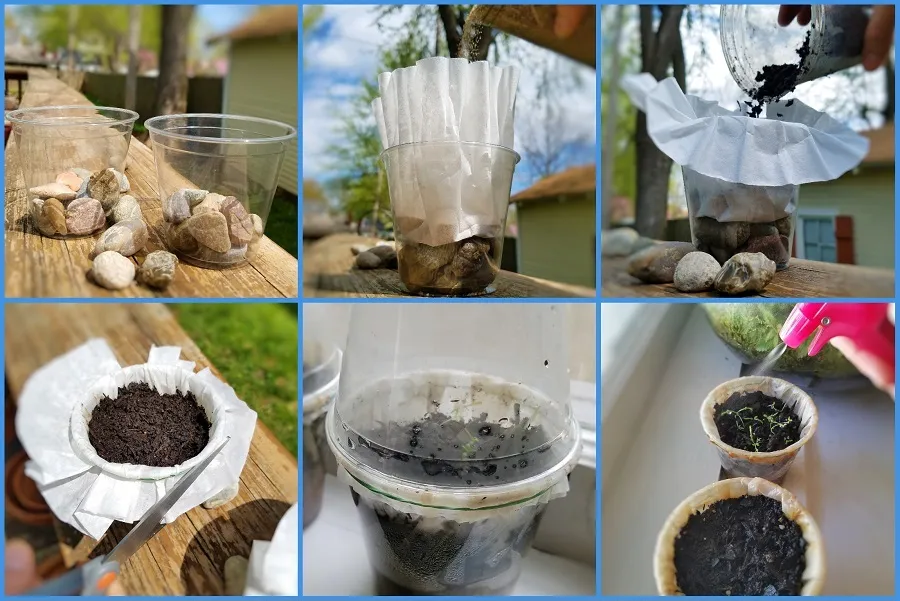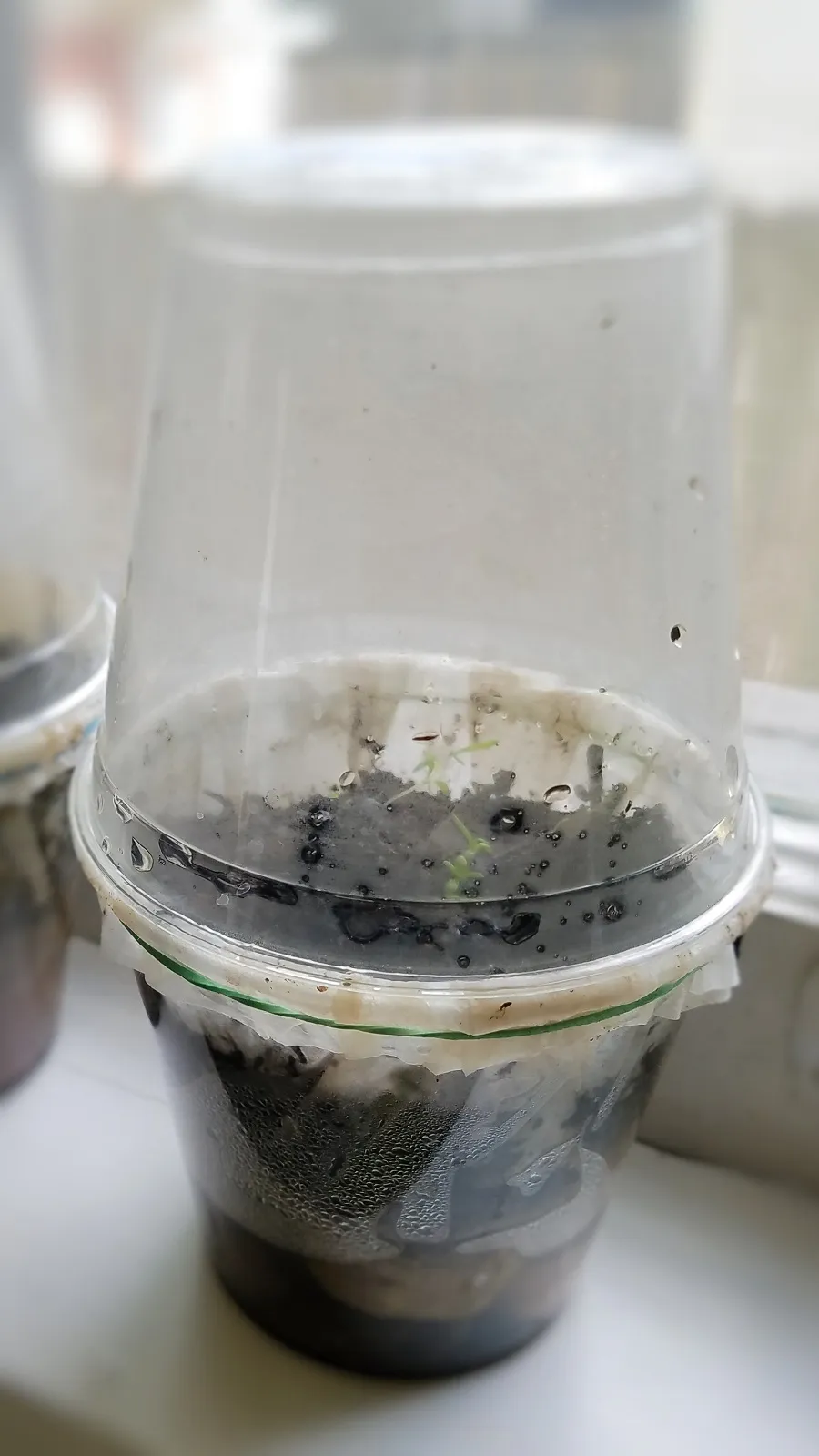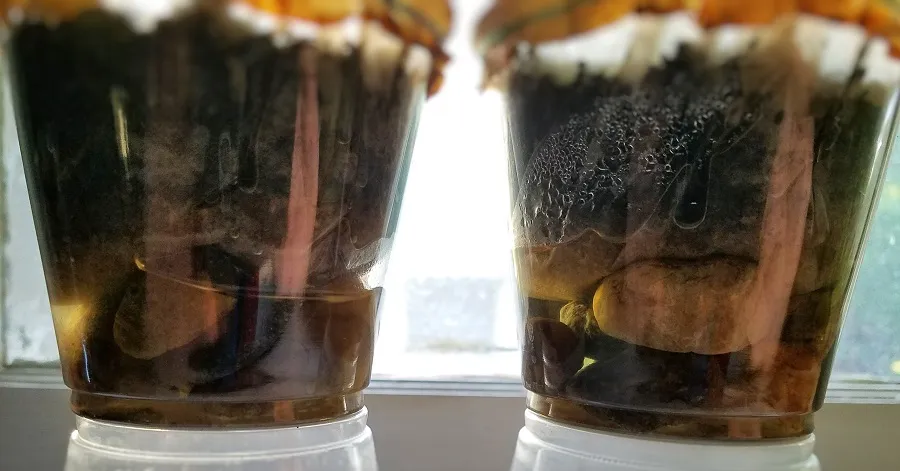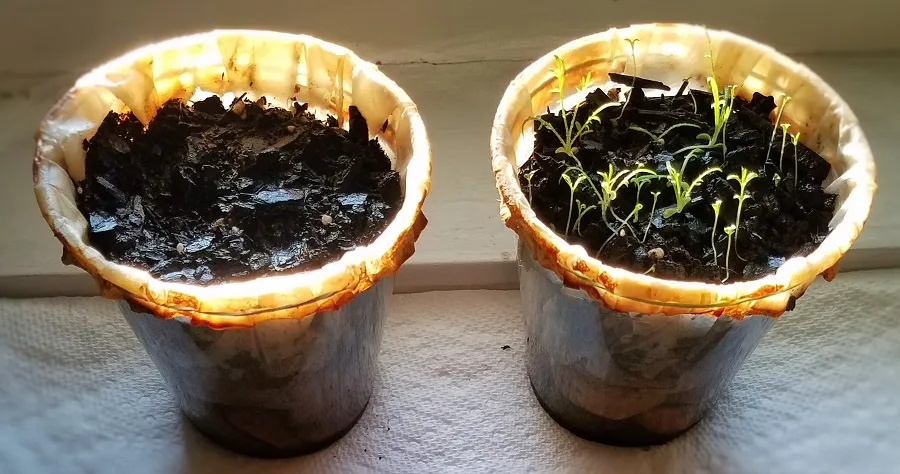Build Your Own Terrarium and Monitor Water Quality

Stormwater run-off can easily pick up pollutants and cause erosion. Plants and trees help filter stormwater run-off and prevent erosion. The water flowing through the lower levels of Fantastic Caverns, began as stormwater on the surface. Create your own terrariums and monitor water quality.
Make your own terrarium and observe the impact of plants on water quality
Supplies
- 4 small jars or cups
- Coffee filters
- Rubber Bands or string
- Rocks
- Sand
- Dirt
- Seeds or established plants
- Water in a spray bottle
- Tape (optional)
Instructions
- Place ¼”-½” diameter stones into the bottom of two cups or jars, about 1” high.
- Put coffee filters into your cups and secure them in place with rubber bands.
- Pour sand into the coffee filters about ¼”-½” deep.
- Pour dirt on top of the sand layer a few inches deep.
- Set one cup aside. This terrarium will not have any plants.
- In the other cup, plant seeds or transplant established plants that you would want to grow in your terrarium.
- Spray water into each cup, enough to fill the space between the rocks and saturate the sand layer.
- Place an empty cup or jar on top of each of your terrariums to establish a mostly self-contained environment and water cycle. You can use tape to secure the top cup to the bottom cup.
- Observe your terrariums over the next few weeks and spray additional water into terrariums as needed. Allow for 2-4 weeks of development.
- Once the terrarium with plants becomes established, drain some water from each terrarium into a cup and examine the water.

Study the water from your terrariums
- Did plants improve or degrade the water quality?
- Did the lack of plants improve or degrade the water quality?
- Did the water in one look clearer than the water in the other?
- What are some similarities with the water?
- What are some differences with the water?
Water infiltrating the earth’s surface, replenishes our aquifers, flows through cave systems, flows out of springs, and is drawn up by wells to become our drinking water. As it rains, and the rainwater moves through the landscape, it picks up pollutants and deposits them into our water resources.

A karst area is full of caves, springs and sinkholes. And these types of features can be a direct path for groundwater contamination
The Ozarks boasts a special kind of landscape known as karst. There are lots of holes in the limestone of the Ozarks; it’s like Swiss cheese below the surface! In karst areas, once water percolates underground, it moves surprisingly great distances. Beneath the surface, water flows through small cracks and large voids, following the path of least resistance.
The water flowing through Fantastic Caverns began as rain
An area of about 15 square miles to the south and west of Fantastic Caverns makes up the watershed of the cave. Water captured in this area moves underground into the cave system. A wet-weather stream flows through the lower passages of Fantastic Caverns. Indian Spring is the name of the wet-weather spring that carries water out of the lower levels of Fantastic Caverns into the Little Sac River.
Where does the water inside Fantastic Caverns originate? Where does it flow out?
Much of the water flowing through the lower passages of Fantastic Caverns starts out on the surface near the Springfield-Branson National Airport, about 5 miles away from the cave. When a lot of rain falls near the airport, we can expect the flow of Indian Spring to increase. At its peak, the output of Indian Spring can reach 9,000 gallons per minute.
The area around the airport is covered with sinkholes. Much of the rain that falls near sinkholes does not flow into rivers or streams; it disappears into the ground, kind of like a sponge. Plants are a great way to protect sinkholes. Plants help filter out contaminants from stormwater run-off and their roots help to stabilize the edge of the sinkhole.

Plants provide habitat; act as buffers; provide shade; and filter out sediments, pollutants and debris
Plants are important in improving water quality. Plants serve as natural filters. The roots of plants keep soil particles together, stabilizing slopes and reducing erosion. The leaves or foliage of plants catch and slow rainfall before it hits the ground. Slowing the rain as it falls helping it soak into the ground more effectively.
One way to help keep our waters healthy is by planting native plants
Vegetation native to an area has adapted to that area’s particular climate and will be less likely to succumb to disease or weather-related issues. Native plants establish more extensive root systems, help filter contaminants out of stormwater run-off and require less maintenance overtime. Native plants and trees planted along waterways helps to prevent erosion and pollution from stormwater run-off. This is called a riparian buffer zone. Even when trees and plants fall into waterways, it provides habitat for animals and nutrients for the stream or lake, and it creates obstacles that can slow the flow of water.

The importance of clean water
We need water to survive, which makes taking care of our water resources extremely important. Protecting the water that we depend on requires us to take action. Knowing pollution comes from our activities, and that surface water and groundwater are highly connected, is a big first step.
About the Author

Director of Marketing
Hubert Heck is the Director of Marketing for Fantastic Caverns